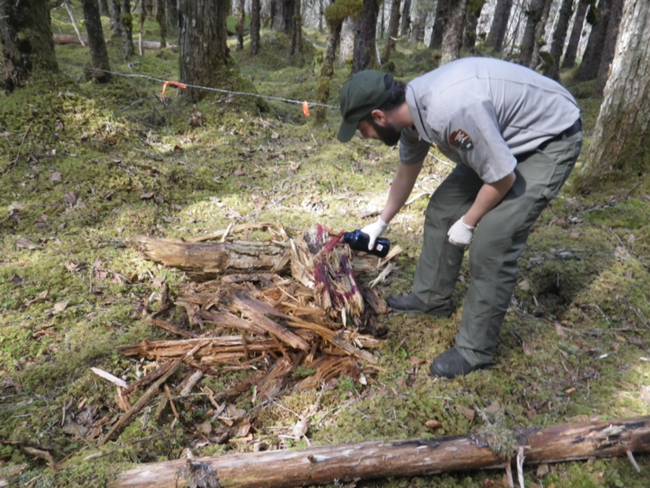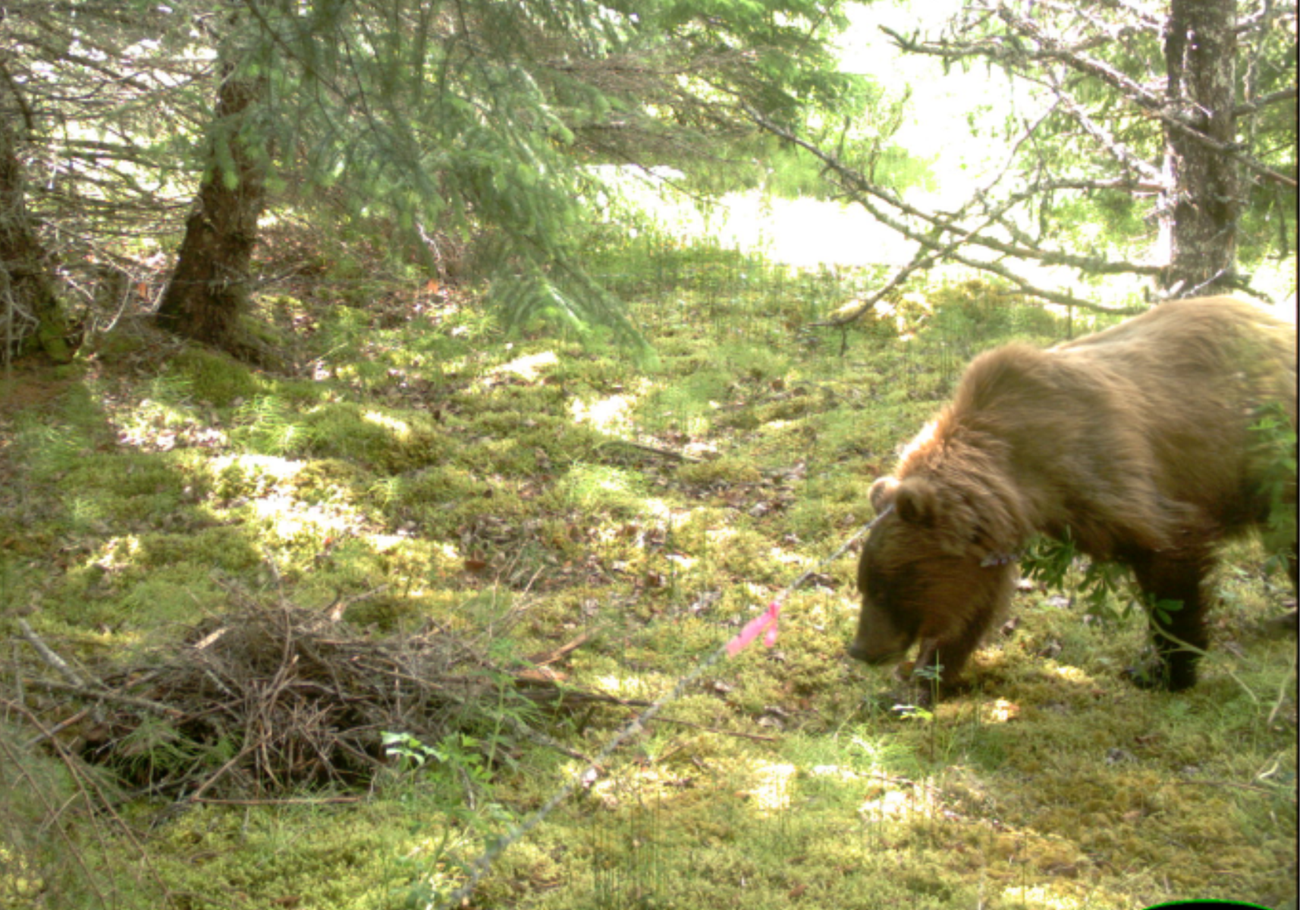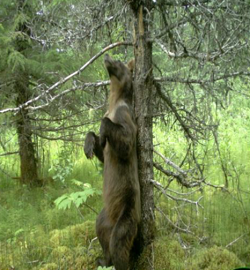Last updated: October 26, 2021
Article
Population Demographics and Sources of Mortality for Bears in Gustavus
By Kyle Pinjuv, Tania Lewis (National Park Service)
Are bear harvest levels in Gustavus sustainable?
Dates:
July 2011-September 2012

Introduction
Very little is known about bear population demographics in and around Glacier Bay. The Gustavus forelands include protected park lands, as well as state and private lands where black bear sport hunting and/or defense of life and property kills occur every year. Bears continually cross jurisdictional borders making interagency collaboration essential for management. This project marks the beginning of a cooperative agreement between the National Park Service and the Alaska Department of Fish & Game to ensure that bear harvest levels are sustainable and to minimize loss of valuable wildlife.
The objectives of this study were to:
- Determine a minimum population estimate of bears in the Gustavus forelands, including their distribution and sex ratio.
- Establish a monitoring protocol for determining bear population trends.
- Provide education and outreach on minimizing bear/human conflicts within the Gustavus community and assist other agencies or groups.
- Explore sources of bear mortality and determine sources of bear/human conflict past and present.
- Explore possible interagency bear management solutions to reduce bear/human conflict
The information gained in this study will help wildlife managers make important decisions concerning bear management throughout the Gustavus forelands.

Methods
In the summer of 2011, 25 bear rub trees were equipped with two strands of barbed wire. Each tree was checked for hair every 10-14 days throughout the summer and fall of 2011, and during the spring and summer months of 2012.
Eight scented hair traps were deployed during the spring of 2012. Traps were baited with a liquid scent on a pile of rotting wood in the center of the trap. All traps were checked and re-baited on the same interval as the rub trees.
Hair samples were analyzed by Wildlife Genetics International for individual ID, sex, and species for each individual sample.

Findings
Over two field seasons, researchers collected 196 hair samples from 25 rub trees and 8 baited hair traps. Genetic analysis revealed that 33 individual black bears and 14 individual brown bears were captured throughout the study, allowing an estimate of the black bear population within the 200 km2 study area of approximately 55. The average number of black bears killed by humans annually was about 4, indicating that the harvest level is within the 10% take currently allowed. There were too few captures of brown bears to perform statistically sound analysis, but the number of individual brown bears identified in the Gustavus Forelands was surprising because this species is rarely seen and has only recently begun using the area after a 50 year absence.
This study can serve as a baseline for future population studies and will contribute to the working knowledge of bear populations.
